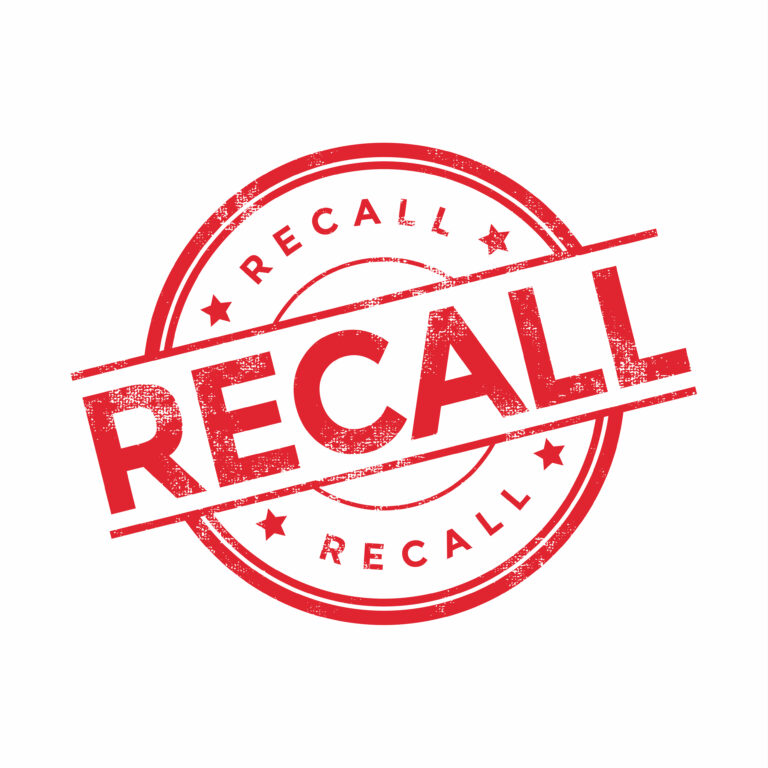It’s Monday morning and you walk into your office to discover that your service center received two calls over the weekend from consumers who experienced physical reactions after consuming your product. On reading through the call logs, you discover both were about the same product. What do you do?
Even if you have the informational advantage of having two concurrent calls about the same product, some of the initial facts may be confusing, incomplete, or even inaccurate, and new facts will likely come to light over time. Thus, depending on the seriousness and confirmation of the initial alleged facts, you need to determine if and what action is warranted and what other information you need to make that decision. A product withdrawal or recall may be necessary and, in some cases, quick action is required. But it also benefits no one if you react too soon so that too much, or a wrong, product is recalled.
So as you gather and confirm facts – keeping a close eye out for any other consumer or customer calls, the first step is determining if it is an issue that triggers a need to inform regulators and if it warrants a recall or other action. If so, a successful recall will depend on how prepared you are; how well and quickly you can answer and implement the following:
- What is the root cause?
- What is the scope?
- What is your recall strategy?
- What is your communications strategy?
- How will you rebuild consumer – and customer – trust in your brand?
Because going into complete depth on recall management can take a full-day simulation training session, this article provides just the basics on each of these to get your thinking started.
- What is the root cause?
The more facts you can gather the more likely you are to be able to establish the root cause and take corrective action. However, in many cases, your gathered information and consumer or customer inputs will make a recall or withdrawal action necessary even before the root cause is established. So conducting the recall should never be the final action, rather it should lead to corrective actions and improvements, as well as continued investigation for the root cause if that was not yet determined. Thus, it is highly advisable that you have a process in place for investigating the root cause of a product issue … well before you have to conduct your first recall.
- What is the Scope?
Time is typically short to move on a recall and you have to do your best to determine scope. The optimal strategy is to do only one recall and not have to go back to expand it. But you also do not want to recall more product than necessary. Having rapid access to data of “what was used where and when” is key to defining scope, along with a swift and accurate root-cause analysis.
- What is your recall strategy?
In the same way, your recall strategy should be well thought out and in place before issues arise. Because of the complexity of the food industry and the number of steps involved in the chain, the question of having to conduct a recall is not a matter of if, but of when. So ensuring you have a written procedure that includes determining what triggers a recall, who is on the recall team/what role each plays, and a step-by-step process to be followed is essential to ensure you can take quick action when needed. TAG has found that conducting regular recall simulations, following your procedures through various potential scenarios, is a great way to assess your process, determine gaps, and make continual improvements.
- What is your communication strategy?
In a recall or other crisis situation, your first thought may not be on communication. But, in today’s world, your brand relies on ensuring you are both proactive and reactive with employees, customers, consumers, and the media. Internal communication with the recall team is, of course, critical to ensure a smooth process; but it is just as essential to ensure other employees know about the recall – from you, not from social media – and are told to not make any public statements, but rather to whom any media or other inquiries should be directed. Developing a customizable press release template will help with the initial communication, having a 24/7 toll-free number for customer calls, selecting a dedicated spokesperson who accurately relays the facts and business perspective, and setting plans for monitoring and responding to social media will all be essential in your recall strategy.
- How will you rebuild consumer – and customer – trust in your brand?
Depending on the extent of the recall, consumer health impacts, and publicity surrounding it, a recall can significantly weaken the confidence and trust that consumers, and customers, have in that product and your brand as a whole. Because of this, the more honest, open, and transparent you were from the start, and remained throughout the incident, the faster and more likely you will be able to rebuild trust. Once the recall is completed, let consumers know what you have done to make improvements to help ensure against repeated incidents. When possible, share your story at conferences, etc., to help drive best practices across the industry, and promote your food safety practices to consumers. As we will discuss in an upcoming newsletter, non-competitive sharing and competitive promotion don’t have to be mutually exclusive.
For more information or training on recall strategies and simulations, give TAG a call. We can help.





